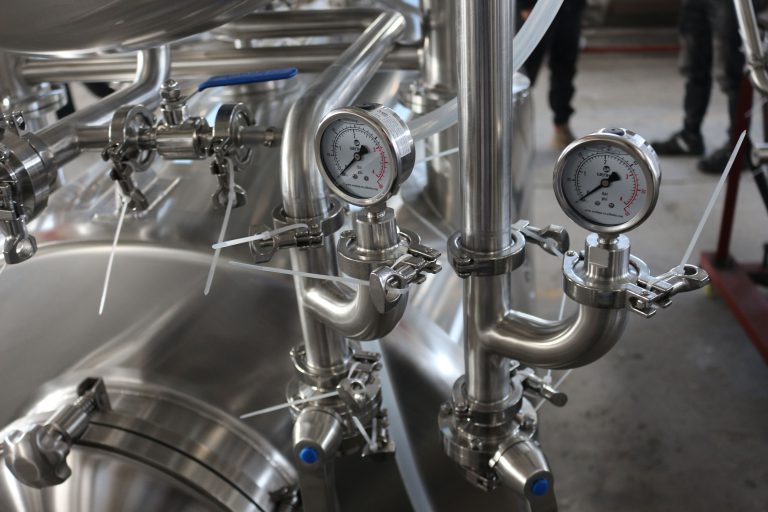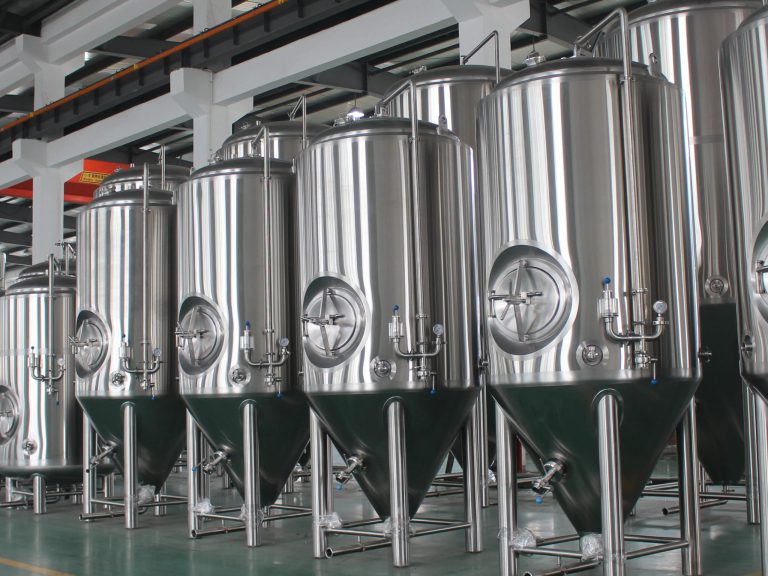Introduction

Entering the world of craft beer requires more than just a passion for brewing; it demands the right microbrewery brewing equipment. This guide dives deep into the essential components needed to establish a successful microbrewery. Whether you’re a budding entrepreneur or looking to upgrade your existing setup, understanding the intricacies of microbrewery brewing equipment is crucial. We’ll explore each piece of equipment, its function, and the considerations for selection. Investing in quality equipment from the outset can significantly impact the consistency and quality of your final product.
Key Components of Microbrewery Brewing Equipment
The Brewhouse: The Heart of the Brewery
The brewhouse is where the magic happens. It consists of several key vessels:
- Mash Tun: This vessel is where grains are mixed with hot water to convert starches into fermentable sugars. Quality mash tuns offer precise temperature control and efficient grain handling. The design of the mash tun influences the efficiency of the sugar extraction process.
- Lauter Tun: Following mashing, the lauter tun separates the sweet liquid (wort) from the spent grains. Effective lautering ensures clear wort, which is vital for beer quality. Proper design and filtration within the lauter tun are crucial for optimal wort clarity.
- Brew Kettle: The wort is boiled in the brew kettle, where hops are added for flavor and aroma. This process also sterilizes the wort. The size and heating efficiency of the brew kettle impact the speed and consistency of the boil.
- Whirlpool Vessel: After boiling, the whirlpool vessel separates hop residue and protein sediment from the wort. This process helps to clarify the wort before fermentation. The design of the whirlpool vessel creates a centrifugal force that effectively separates the sediment.
Fermentation Vessels: Where Beer Takes Shape
Fermentation vessels, or fermenters, are where yeast converts sugars into alcohol. These vessels come in various sizes and designs, including:
- Conical Fermenters: These are popular for their ease of cleaning and sediment removal. The conical shape allows sediment to settle at the bottom, making it easy to remove.
- Unitanks: These can be used for both fermentation and conditioning, saving space and cost. This versatility makes unitanks a popular choice for smaller breweries with limited space.
Conditioning Tanks: Maturing Your Beer
Conditioning tanks allow beer to mature, improving flavor and clarity. These tanks often maintain precise temperature control. Precise temperature control during conditioning is essential for achieving the desired flavor profile. The length of conditioning varies depending on the beer style.
Filtration Systems: Achieving Clarity
Filtration systems remove unwanted particles, resulting in clear, bright beer. Common filtration methods include:
- Plate and Frame Filters: These use filter sheets to remove particles. These filters are effective at removing larger particles and improving beer clarity.
- Diatomaceous Earth Filters: These use a powder to trap particles. This method is highly effective for achieving a very clear and bright beer.
Packaging Equipment: Getting Beer to Customers
Packaging equipment includes:
- Bottling Machines: For filling and capping bottles. Automated bottling machines increase production efficiency and consistency.
- Kegging Systems: For filling and sealing kegs. Kegging systems are essential for breweries that distribute beer to bars and restaurants.
- Canning Lines: For filling and sealing Cans. Canning lines are becoming increasingly popular due to the convenience and portability of cans.
Cleaning and Sanitation Equipment: Maintaining Hygiene
Cleanliness is paramount in brewing. CIP (Clean-in-Place) systems automate the cleaning of tanks and pipes, ensuring consistent sanitation. Proper sanitation prevents contamination and ensures the quality of the final product.
Quality Control Equipment: Ensuring Consistency
Quality control equipment, such as hydrometers, pH meters, and spectrophotometers, ensures consistent beer quality. These tools help brewers monitor and adjust the brewing process to maintain consistent quality. Consistent quality is essential for building a strong brand reputation.
Supporting Equipment: Essential Additions
Supporting equipment includes pumps, hoses, valves, and heat exchangers, all of which play vital roles in the brewing process. Pumps ensure efficient liquid transfer, while heat exchangers regulate temperature. Proper selection and maintenance of these components are crucial for smooth operations.
Microbrewery Brewing Equipment Selection Considerations
When selecting microbrewery brewing equipment, consider:
- Brewery Size and Capacity: Match equipment capacity to your production goals. Accurately estimating your production capacity is essential for choosing the right size equipment.
- Budget: Balance cost with quality and features. It’s important to invest in durable and reliable equipment that will last.
- Space Availability: Ensure equipment fits within your brewery space. Space constraints can significantly impact equipment selection.
- Automation Level: Decide on the level of automation needed. Automation can increase efficiency and consistency, but it also increases cost.
- Future Expansion: Choose equipment that can accommodate future growth. Planning for future expansion can save money in the long run.
Table of Essential Microbrewery Brewing Equipment
| Equipment Category | Equipment Type | Key Functions |
|---|---|---|
| Brewhouse | Mash Tun | Converts starches in grains to fermentable sugars. |
| Brewhouse | Lauter Tun | Separates wort from spent grains. |
| Brewhouse | Brew Kettle | Boils wort and adds hops. |
| Brewhouse | Whirlpool Vessel | Separates hop residue and protein sediment. |
| Fermentation | Conical Fermenters | Ferments wort into beer. |
| Fermentation | Unitanks | Ferments and conditions beer. |
| Conditioning | Conditioning Tanks | Matures beer for improved flavor. |
| Filtration | Plate and Frame Filters | Removes particles for clarity. |
| Filtration | Diatomaceous Earth Filters | Removes particles using powder. |
| Packaging | Bottling Machines | Fills and caps bottles. |
| Packaging | Kegging Systems | Fills and seals kegs. |
| Packaging | Canning Lines | Fills and seals Cans. |
| Cleaning | CIP Systems | Automates cleaning and sanitation. |
| Quality Control | Hydrometers | Measures specific gravity. |
| Quality Control | pH Meters | Measures pH levels. |
| Quality Control | Spectrophotometers | Measures color and clarity. |
| Support | Pumps | Transfers liquids. |
| Support | Hoses and Valves | Controls liquid flow. |
| Support | Heat Exchangers | Cools or heats liquids. |
Maintaining Your Microbrewery Brewing Equipment
Regular maintenance is essential for longevity and efficiency. This includes:
- Routine Cleaning: Clean equipment after each use. Proper cleaning prevents contamination and ensures consistent beer quality.
- Scheduled Inspections: Check for wear and tear. Regular inspections can identify potential problems before they become major issues.
- Preventative Maintenance: Replace worn parts before they fail. Preventative maintenance can extend the lifespan of your equipment.
- Calibration: Ensure accuracy of measurement equipment. Accurate measurements are essential for consistent beer quality.
Upgrading Your Microbrewery Brewing Equipment

As your brewery grows, upgrading equipment may be necessary. Consider:
- Increased Capacity: Upgrade to larger tanks or more efficient systems. Upgrading capacity can help you meet increasing demand.
- Automation: Add automated systems for consistency and efficiency. Automation can reduce labor costs and improve consistency.
- Advanced Filtration: Improve beer clarity with advanced filtration. Advanced filtration systems can produce a higher quality final product.
Conclusion
Investing in the right microbrewery brewing equipment is crucial for producing high-quality craft beer. Careful consideration of your needs, budget, and future growth will ensure you select the best equipment for your brewery. By understanding the function and maintenance of each component, you can establish a successful and efficient brewing operation. Don’t hesitate to contact us today to begin your journey with the perfect microbrewery brewing equipment. We are here to help you get the best equipment and start making your dream come true.
FAQ
What is the most critical piece of microbrewery brewing equipment?
The brewhouse is the heart of the brewery and is arguably the most critical component. The brewhouse directly impacts the quality of the wort, which is the foundation of the beer.
How do I choose the right size fermentation vessels?
Match the vessel size to your batch size and production goals. Choosing the right size vessels ensures efficient fermentation and reduces waste.
What is the purpose of a CIP system?
CIP systems automate cleaning and sanitation, ensuring hygiene and consistency. These systems reduce labor and ensure consistent cleaning results.

